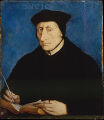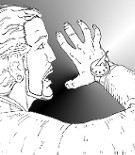Template:Selected anniversaries/January 26: Difference between revisions
No edit summary |
No edit summary |
||
| Line 25: | Line 25: | ||
||1911: Polykarp Kusch born ... physicist. In 1955, the Nobel Committee gave a divided Nobel Prize for Physics, with one half to going to Kusch for his accurate determination that the magnetic moment of the electron was greater than its theoretical value, thus leading to reconsideration of—and innovations in—quantum electrodynamics. Pic. | ||1911: Polykarp Kusch born ... physicist. In 1955, the Nobel Committee gave a divided Nobel Prize for Physics, with one half to going to Kusch for his accurate determination that the magnetic moment of the electron was greater than its theoretical value, thus leading to reconsideration of—and innovations in—quantum electrodynamics. Pic. | ||
File:Polykarp Kusch (1955).jpg|link=Polycarp Kusch (nonfiction)|1911: Physicist and academic [[Polycarp Kusch (nonfiction)|Polykarp Kusch]] born. Kusch will make an accurate determination that the magnetic moment of the electron is greater than its theoretical value, thus leading to reconsideration of—and innovations in—quantum electrodynamics; he will be awarded the 1955 Nobel Prize in Physics for this accomplishment. | |||
||1919: Igor Gouzenko born ... cipher clerk for the Soviet Embassy to Canada in Ottawa, Ontario. He defected on September 5, 1945 – just three days after the end of World War II – with 109 documents on Soviet espionage activities in the West. Pic (wearing hood mask during testimony - how cool is that?). | ||1919: Igor Gouzenko born ... cipher clerk for the Soviet Embassy to Canada in Ottawa, Ontario. He defected on September 5, 1945 – just three days after the end of World War II – with 109 documents on Soviet espionage activities in the West. Pic (wearing hood mask during testimony - how cool is that?). | ||
Revision as of 15:14, 21 March 2020
1467: Scholar and philosopher Guillaume Budé born. His De Asse et Partibus Eius (1514), a treatise on ancient coins and measures, will secure his reputation.
1848: Mathematician and crime-fighter János Bolyai publishes new theory of non-Euclidean geometry which detects and prevents crimes against mathematical constants.
1857: Printer, bookseller, and inventor Édouard-Léon Scott de Martinville submits sealed patent application for the phonoautograph, which records an audio signal as a photographic image.
1884: Signed first edition of Alice Beta and Niles Cartouchian Play Chess purchased for an undisclosed amount in charity benefit for victims of crimes against mathematical constants.
1885: Physician, scientist, and inventor Edward Davy dies. He played a prominent role in the development of telegraphy, and invented an electric relay.
1895: Mathematician and academic Arthur Cayley dies. He was the first to define the concept of a group in the modern way, as a set with a binary operation satisfying certain laws.
1911: Physicist and academic Polykarp Kusch born. Kusch will make an accurate determination that the magnetic moment of the electron is greater than its theoretical value, thus leading to reconsideration of—and innovations in—quantum electrodynamics; he will be awarded the 1955 Nobel Prize in Physics for this accomplishment.
1926: Engineer and inventor John Logie Baird makes the first public demonstration of television.
1933: Mathematician Donald Erik Sarason born. He will make fundamental advances in the areas of Hardy space theory and Vanishing mean oscillation (VMO).
1943: American eugenicist and sociologist Harry H. Laughlin dies. He will be the Superintendent of the Eugenics Record Office from its inception in 1910 to its closing in 1939, and among the most active individuals in influencing American eugenics policy, especially compulsory sterilization legislation.
1961: Mathematician and crime-fighter Richard Courant publishes new class of Gnomon algorithm functions which detect and prevent crimes against mathematical constants.
1962: Ranger 3 is launched to study the Moon. The space probe later misses the moon by 22,000 miles (35,400 km).
1963: The Flying Diner announces twice-daily flights between New Minneapolis, Canada and Saint Paul, Minnesota.
2017: Steganographic analysis of Green Spiral 9 unexpectedly reveals "at least a thousand twenty-four kilobytes, perhaps two thousand forty-eight" of previously unknown Gnomon algorithm functions.














